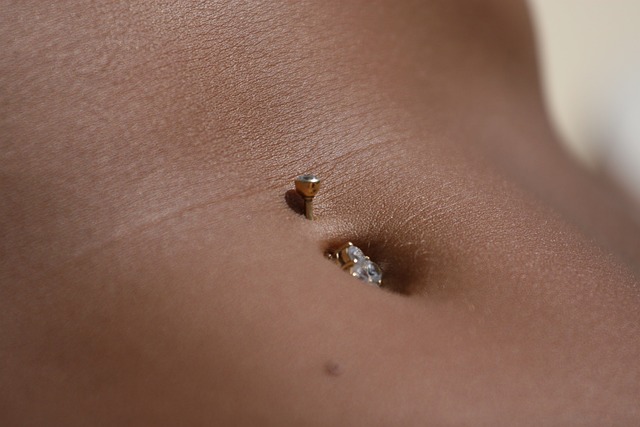Non-surgical body sculpting, a growing trend, offers effective fat reduction and body contouring without incisions or extensive recovery. Advanced technologies like HIFEM, radiofrequency, and laser stimulate collagen production, break down fat cells, and enhance skin elasticity, providing quick, painless sessions tailored to individual needs. Popular methods include CoolSculpting, Emsculpt, and HIFU, targeting stubborn fat in areas like the abdomen, thighs, and arms with minimal downtime. Results typically last 6 months to several years, emphasizing the importance of post-treatment care and lifestyle maintenance. Beyond physical changes, these procedures can boost self-esteem, but managing expectations is crucial for psychological well-being. Consulting healthcare professionals ensures safety, effectiveness, and realistic outcomes for achieving desired body contours.
Non-surgical body sculpting is a growing trend in the quest for a slimmer, more contoured figure. This article delves into the world of non-invasive slimming procedures, exploring innovative techniques that offer an alternative to traditional surgery. From understanding the fundamentals to dissecting popular methods and their benefits, we provide a comprehensive guide. Learn about candidate suitability, recovery processes, and the lasting impact on both physical and mental well-being. Discover how non-surgical body sculpting is transforming the way we approach beauty and self-improvement.
Understanding Non-Invasive Slimming Procedures

Non-invasive slimming procedures, such as non-surgical body sculpting, have gained significant popularity in recent years due to their ability to deliver noticeable results with minimal discomfort and recovery time. These advanced treatments offer an alternative to traditional surgical options, appealing to those seeking a more gentle approach to achieving their desired figure. By targeting specific areas of concern, non-surgical techniques can reduce stubborn fat, contour the body, and promote skin tightening without the need for incisions or prolonged downtime.
Non-surgical body sculpting employs various technologies like high-intensity focused electromagnetic energy (HIFEM), radiofrequency, and laser to stimulate collagen production, break down fat cells, and improve skin elasticity. These procedures are typically non-painful, quick, and can be performed in a doctor’s office or clinic setting. With numerous options available, individuals can tailor their slimming journey to their specific needs and goals, ensuring they receive the best possible outcome without the risks associated with surgery.
The Rise of Non-Surgical Body Sculpting Techniques

The quest for achieving a slimmer, more sculpted figure has led to a significant rise in popularity of non-surgical body sculpting techniques. These cutting-edge procedures offer a safe and effective alternative to traditional invasive surgeries, appealing to individuals seeking subtle yet visible enhancements. With minimal downtime and little to no recovery, it’s no wonder these methods are gaining traction among those aiming to improve their physique.
Non-surgical body sculpting employs various technologies like high-intensity focused electromagnetic energy (HIFEM), radiofrequency, and ultrasound to target and break down fat cells. These innovative approaches allow for the reduction of stubborn fat deposits while simultaneously stimulating muscle tone. As a result, individuals can achieve their desired silhouette without undergoing extensive surgery or facing the associated risks.
How Do These Treatments Work?

Non-surgical body sculpting treatments have gained popularity for their ability to contour and reduce fat cells without invasive procedures. These innovative techniques leverage a combination of technologies, such as cold therapy, high-intensity focused electromagnetic energy, and targeted radiofrequency. By targeting specific areas of fat, these treatments stimulate lipolysis—the natural process where fat cells break down and are eliminated by the body. The result is a slimmer, more defined silhouette without the downtime or recovery associated with surgical options.
During a typical session, patients undergo a series of non-invasive procedures that safely disrupt adipose tissue. This disruption leads to reduced fat cell size and number in the treated areas. Over time, as the body naturally metabolizes these smaller fat cells, inches are lost, and curves are sculpted, offering a more aesthetically pleasing figure. Moreover, many modern non-surgical body sculpting treatments are designed to stimulate collagen production, further enhancing skin tightness and tone alongside the fat reduction.
Common Non-Invasive Methods for Achieving a Slimmer Figure

Common Non-Invasive Methods for Achieving a Slimmer Figure include various non-surgical body sculpting techniques that have gained popularity in recent years. One of the most well-known methods is CoolSculpting, which uses cryolipolysis to freeze and eliminate fat cells without any incisions or recovery time. This procedure is particularly effective for reducing stubborn fat in specific areas like the abdomen, thighs, and arms.
Another popular option is Emsculpt, which combines radiofrequency energy with magnetic fields to target and tighten both fat cells and muscle fibers simultaneously. This non-surgical approach not only helps to slim down problem areas but also improves body contouring. Moreover, high-intensity focused ultrasound (HIFU) treatments, like Ultherapy, offer a way to lift and firm the skin while reducing fat, making them ideal for achieving a more youthful and slender appearance without any downtime.
Benefits and Advantages Over Traditional Surgery

Non-surgical body sculpting offers a revolutionary approach to slimming and contouring, providing numerous benefits over traditional surgery. One of its key advantages is the absence of incisions, scars, and recovery periods typically associated with invasive procedures. This makes non-surgical methods more appealing to individuals seeking quicker, less disruptive ways to achieve their desired physique.
Additionally, non-surgical body sculpting techniques are often less expensive and have shorter downtime, allowing patients to resume their normal activities sooner. These procedures use advanced technologies like lasers, radiofrequency, or vacuum suction to target specific fat cells and stimulate collagen production, resulting in inch loss and improved skin texture. This minimal-invasive approach ensures safety, comfort, and effectiveness, making it a preferred choice for those cautious of surgery or seeking alternative solutions for body shaping.
Candidate Selection: Who Is a Good Fit?

Non-invasive slimming procedures, like non-surgical body sculpting, are becoming increasingly popular for those seeking to improve their figure without the risks and recovery time associated with surgery. The ideal candidates for these treatments are individuals who maintain a healthy lifestyle, have stable weight, and realistic expectations. Age is also a factor; younger skin tends to heal faster after such procedures.
Before considering non-surgical body sculpting, it’s essential to consult a qualified healthcare professional or dermatologist. They can evaluate your overall health, discuss potential risks and side effects, and help determine if these treatments are suitable for your specific needs and goals. It’s crucial to remember that these procedures aren’t one-size-fits-all; the right fit depends on various factors unique to each individual.
Safety and Recovery: What to Expect

Non-surgical body sculpting procedures are generally safe, as they don’t involve incisions or extensive downtime. These treatments typically use technologies like ultrasound, radiofrequency, or laser to target and break down fat cells, stimulating the body’s natural metabolism to eliminate them. The safety of these methods lies in their ability to be minimally invasive, with minimal pain and little to no side effects.
Recovery from non-surgical slimming procedures is usually swift. Most people can resume their normal activities within a day or two. There may be some temporary redness or mild swelling at the treatment areas but these usually subside quickly. It’s recommended to follow post-treatment care instructions, including staying hydrated and maintaining a healthy diet, to ensure optimal results and accelerated recovery.
Longevity of Results: Are They Permanent?

The longevity of results with non-surgical body sculpting procedures has been a topic of interest for many seeking to enhance their figure. Unlike invasive surgeries, these treatments offer a temporary yet effective solution for fat reduction and contouring. The duration of the results can vary depending on various factors such as the individual’s metabolism, lifestyle, and adherence to post-procedure recommendations. Typically, non-surgical body sculpting techniques provide visible outcomes that can last from 6 months to several years with proper care.
While some procedures may produce longer-lasting results than others, maintaining the achieved physique requires a healthy diet and regular exercise. It’s important to understand that these treatments are not a permanent solution for weight management but rather a tool to aid in achieving and maintaining a desired figure. Consulting with qualified professionals ensures that you receive accurate information about what to expect and how to maximize the benefits of your chosen non-surgical body sculpting method.
Exploring the Psychological Impact and Body Image Perception

Non-surgical body sculpting procedures have gained significant traction in recent years, largely due to their ability to offer visible results with minimal recovery time. However, beyond the physical changes, these treatments also hold psychological implications worth exploring. The mental impact of non-invasive slimming procedures often involves a complex interplay of emotions and perceptions related to body image.
For many individuals, embracing these techniques can be a step towards improving self-esteem and confidence in one’s appearance. Positive outcomes from such procedures can reinforce a sense of control over one’s physical attributes, fostering a more favorable body image. Conversely, some may experience psychological challenges if their expectations exceed the realistic outcomes achievable through non-surgical methods. Understanding and addressing these psychological dimensions is crucial to ensure patients’ well-being and satisfaction with their journey towards achieving their desired physique.
